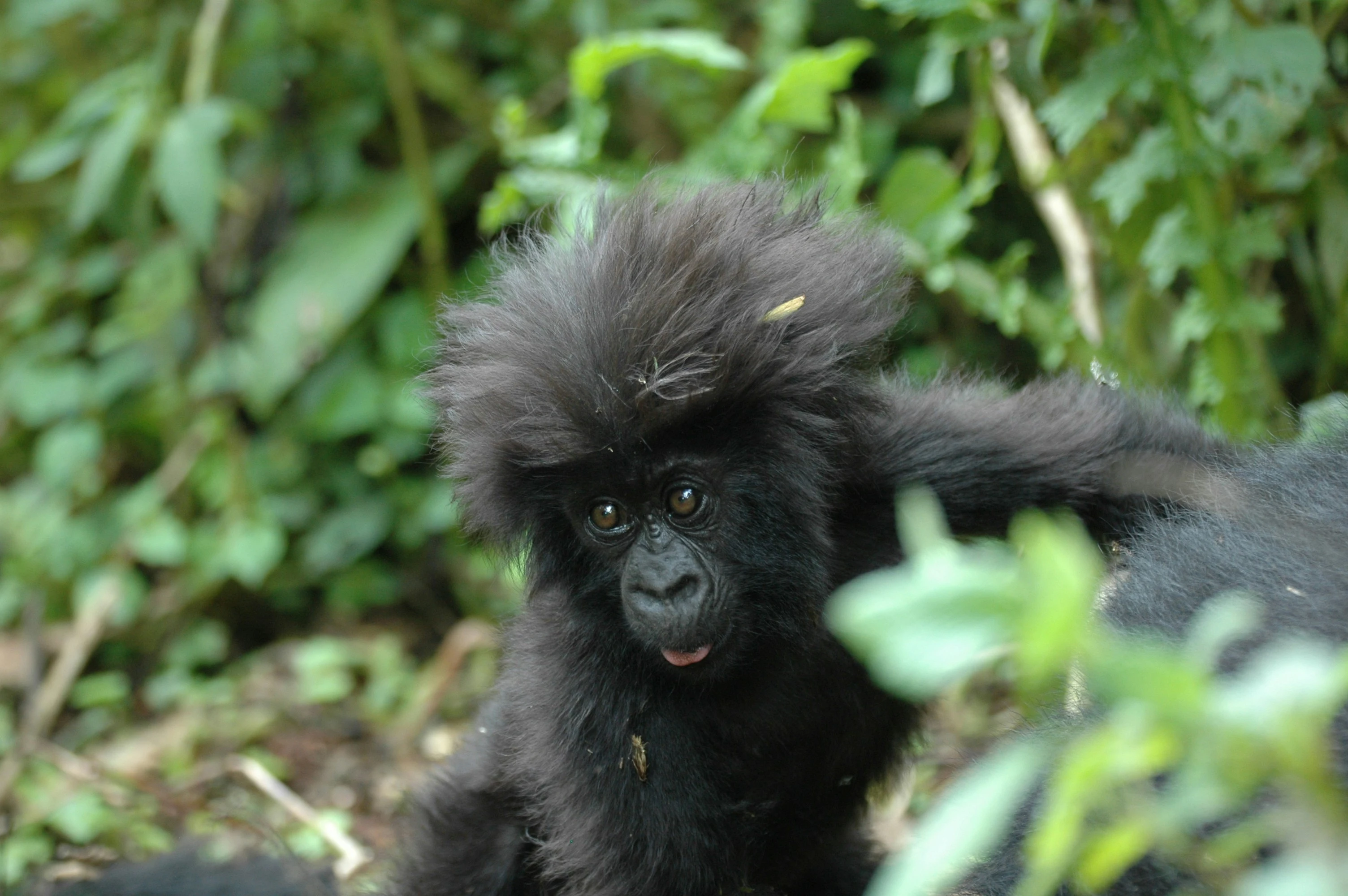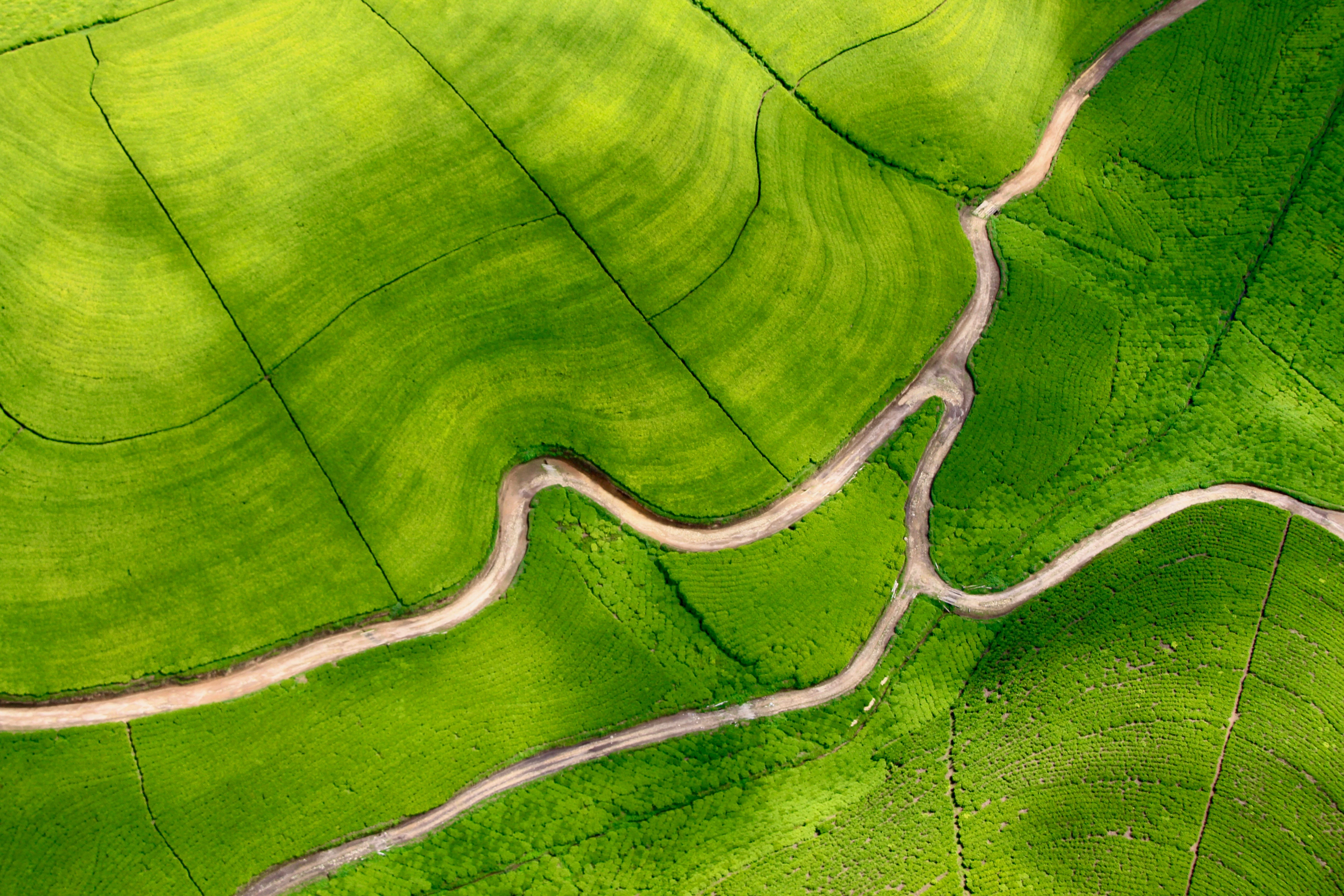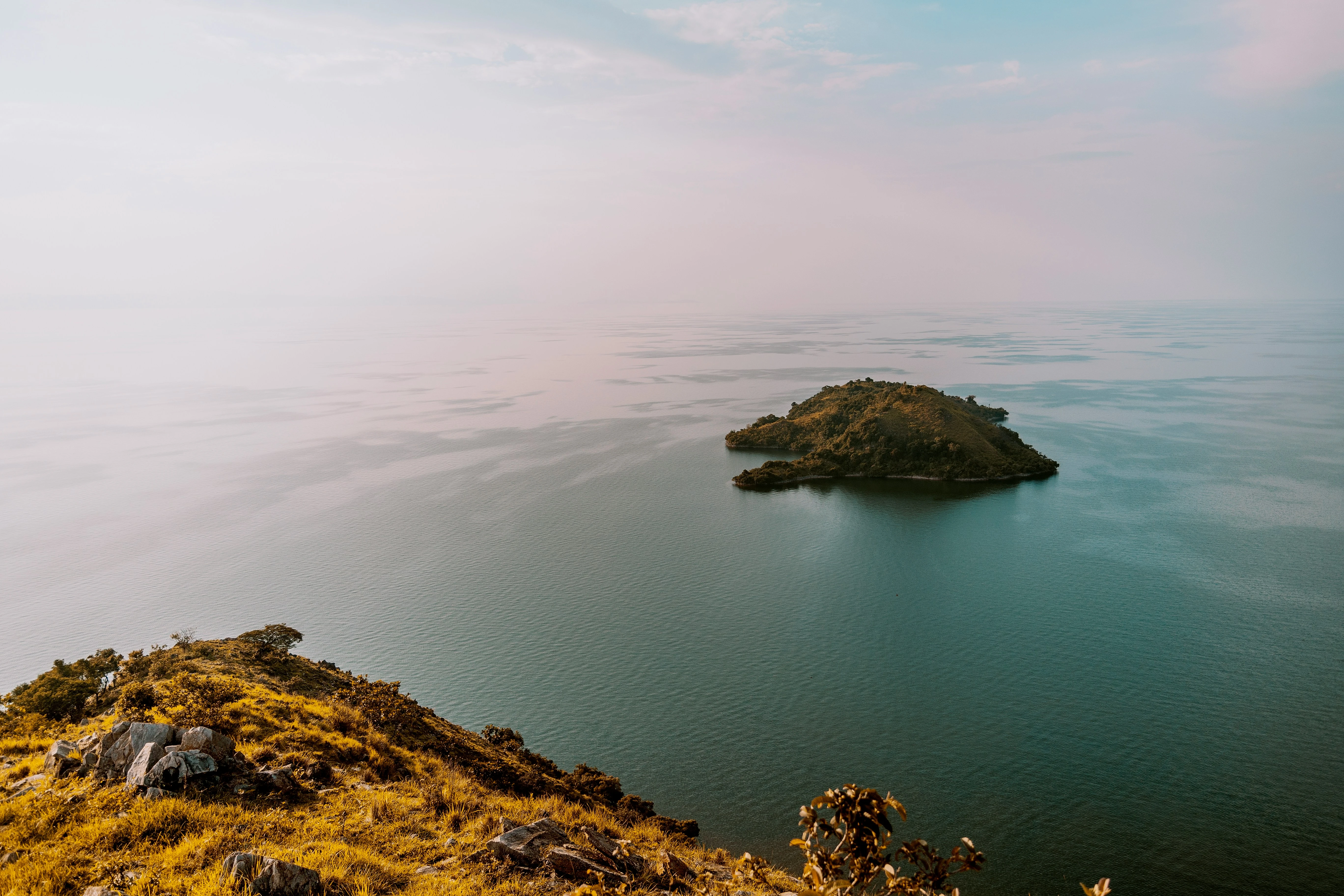
Rwanda…the “Land of a Thousand Hills”. When one thinks of Rwanda, one of the first activities that comes to mind is embarking on an adventure through mountainous regions in search of wildlife. Gorilla trekking is a one-of-a-kind experience and visitors can see these gentle giants in the Volcanoes National Park.
Golden monkeys are at play in the Virunga National Park, and birdlife is prolific in Nyungwe Forest, where over 300 different species have been recorded. Spend time exploring the undulating landscape of the Akagera National Park, home to one of central Africa’s largest protected wetlands.
Any visit to Rwanda will include some time spent in the capital, Kigali. A city boasting quietness and cleanliness, Kigali prides itself on being a city of art galleries, a strong culture and a moving history. The contrast lies between the wild land surrounding the city and Kigali’s tumultuous past.
Volcanoes, impressive biodiversity and one-of-a-kind experiences make Rwanda an intriguing and must-see country. Visitors have a chance to dive into rich Rwandan traditions and then leave nothing but their footprints when embarking on Rwanda gorilla trekking.
Rwanda Geography

Rwanda is located in East Africa, bordering the Democratic Republic of the Congo to the west, Uganda to the north, Tanzania to the east and Burundi to the south. It is a small country boasting a myriad of undulating hills, picturesque national parks and home to mountain gorillas and many other wonderful wildlife.
The central and western parts of Rwanda are dominated by mountains that form part of the East African Rift. The Virunga volcano chain lies in the Northwest of the country and forms the highest peaks in Rwanda with Mount Karisimbi noted as Rwanda’s highest peak.
Rwanda’s center comprises mostly rolling hills while in contrast, the Eastern border region boasts spectacular savannas, swamps and open plains. A Rwandan safari will offer guests the opportunity to visit both mountainous and forest regions, also allowing witnessing a variety of wildlife.
Rwanda’s surface is approximately 10,000 square miles in size with around 3% of the land covered in water. Lakes are scattered around the country, with famous destinations such as Lake Kivu and Lake Ruhondo often included in a Rwanda safari.
Best Time For a Rwanda Safari
Rwanda is a destination offering experiences that range from safaris to gorilla trekking and golden monkey tracking and boasts a rich history that can be discovered when visiting Kigali. Timing your visit to ensure optimal weather and fewer crowds, is important and will enhance your overall Rwanda safari.
Two dry seasons are lasting from June-September and December-February. These are an ideal time to visit with sunny skies and minimal rainfall. The two rainy seasons are March-May and October-November when showers and thunderstorms are more frequent.
The best time to visit for gorilla trekking would be between June and September and again from mid-December to the beginning of February. These are the long dry season and short dry season respectively, creating the ideal conditions for tracking gorillas.
Birdlife is prolific between January and March, with visits to parks such as Akagera National Park offering incredible sightings, particularly at sunrise and sunset when the lighting is perfect. Memorable wildlife encounters are possibly throughout the year, however visiting based on your preferences is key.
Rwanda Climate
Rwanda has a tropical highland climate that is surprisingly cool and temperate compared to many other equatorial African nations. With warm sunny days, cool nights, and a couple of drier seasons, the climate lends itself perfectly to outdoor activities like hiking and wildlife safaris.
The average daytime temperatures across Rwanda range between the mid-60s to upper-70s Fahrenheit (18-26°C). Nights are quite cool, often dipping into the 50sF (10-15°C). The combination of warm days and cool nights makes the weather extremely comfortable for the majority of the year.
The climate does vary across different regions of the small, hilly nation. Areas like Kigali and the eastern savannas tend to be warmer, while places at higher elevations like Musanze and Nyungwe Forest experience lower temperatures.
Rainfall varies depending on the region, with the areas to the West and Northwest receiving more rainfall annually than areas in the East and Southeast. Even during the rainier months of March to May or October and November, precipitation is not excessive and rarely lasts all day. Mornings often start sunny before rain develops in the afternoon and evening hours.
Health & Safety
Embarking on any of the primate tracking experiences during your Rwanda safari is an exciting adventure, and knowing how to do so with your safety and the safety of the gorillas and golden monkeys in mind, will ensure you have a truly remarkable experience.
There are key guidelines in place when it comes to viewing primates in Rwanda and your park rangers and gorilla trekking guides will brief you on how to behave and what rules to follow during your trek. Masks may be required when you reach the gorilla families so that they don’t pick up any human diseases.
General safety when walking around Kigali should be adhered to in order to ensure you can explore the various art galleries and museums in a leisurely and comfortable manner. Knowing where to go and what time is best to visit, will ensure you can relax and know you are safe at all times.
Malaria is present in Rwanda, so taking a malaria prophylactic is a good idea. If you are visiting countries that require Yellow Fever certificates, such as Tanzania, you may be required to receive a Yellow Fever vaccination.
Which Rwanda parks are best to visit?
A popular reason for visiting Rwanda is to embark on a gorilla trek, and so many visitors will spend time in the Virunga Mountains and the Volcanoes National Park. Volcanoes are home to the endangered mountain gorilla and possess a puzzle of montane ecosystems that includes bamboo forests, open grasslands and swamps.
The Akagera National Park is noted as Central Africa’s largest protected wetlands and comprises vast open plains or Savannah’s as well as picturesque mountains. Animals that roam the Park include giraffes, lions, elephants, and zebras, as well as several bird species. A favorite residence has to be the shoebill stork, unique in looks and mannerisms.
The Nyungwe National Park and Forest prides itself in being one of Africa’s largest rainforests and is a haven to primates such as chimpanzees and, endemic to the Albertine Rift, L’Hoest’s monkey. Capture the beauty of the light streaming through the trees and take in the sounds of prolific birdlife while wandering through the trails of this incredibly green national park.

The Gishwati Mukura National Park stands as one of Rwanda’s last remaining mid-altitude rainforests and is home to various primate species like chimpanzees, monkeys and baboons. It also harbors forest elephants, antelopes, and a variety of bird species. The park plays an important role in conserving some of the remaining patches of biodiversity-rich transitional rainforest, containing vegetation types ranging from moist montane forests to swamp and riverine habitats.
What to expect on our Rwanda Gorilla Treks & Safaris?
Embarking on a Rwanda safari and Rwanda gorilla trek will introduce you to an adventure like no other. Getting up close and in-person with East Africa’s gentle giants is a once-in-a-lifetime experience, and knowing what to expect can prepare you and enhance your encounters.
You will be under the guidance of a qualified guide at all times, with the expertise of local gorilla guides and porters assisting you on your gorilla-tracking journey. They will brief you on appropriate behavior and pull you up mountainsides and through thick bushes as you search for gorillas.
Your Rwanda safari will teach you about the magic of the savannahs, swamps, forests and ravines in parks such as the Akagera National Park and the breathtaking Nyungwe Forest. You will be able to enjoy safari drives and walking adventures in search of wildlife and birds.
Spending time in Kigali admiring the city’s art galleries and museums is a popular inclusion in a Rwanda safari itinerary. Learning about the history of the country’s genocide is haunting and important for visitors to experience. Getting to interact with locals is a wonderful way to understand the local culture and traditions.
How to prepare for Gorilla Trekking in Rwanda
When you start to plan for your gorilla trekking in Rwanda, it is helpful to understand you will have assistance along your trekking path, with porters available to carry your backpack or day pack, cameras and essentials like water and sunscreen. So pack the essentials in your bag … you won’t have to carry it all yourself.
When packing for your Rwanda gorilla trek, including light yet long-sleeve clothing and long pants are important and will keep you cool yet covered during your gorilla trek. Good walking shoes, plus thick socks are recommended, plus a sun hat to keep you cool should it be a warm day.
Gardening gloves are a great idea as there may be moments when you will need to move thick bushes or sticks aside. Waders are recommended to fit over the bottom of your pants. If you aren’t able to find these, there are some lodges and camps that may be able to provide you with them.
Read up about gorilla tracking and trekking in Rwanda and when you arrive for your trek, listen to the rules and safety guidelines set out by your trekking guide. Go at your pace and speak out if you need to stop along the way. Knowing how to behave in front of the gorillas is important so listen up and enjoy!
How much does it cost to trek with gorillas in Rwanda
Rwanda gorilla trekking is a unique and mostly a once-in-a-lifetime experience, and the opportunity to view them in their natural habitat comes at a hefty price. With a focus on protecting the gorillas of Rwanda, permits are currently sitting at USD 1500 per person.
Accommodation in the region ranges from comfortable to extremely high-end, and depending on where you choose to stay during your gorilla trekking adventure, the overall price of your experience could come in at quite a steep price tag. Taking advantage of the tranquil settings, the accommodations in the Volcanoes National Park truly set the scene for your gorilla adventure.
Some people choose to do more than one gorilla trek, either in Rwanda one day after another, or combine an East African gorilla adventure by trekking in both Uganda and Rwanda. This will naturally increase overall costs.
If you choose to explore more than just the gorilla families in Rwanda, but look to enjoy a safari in the Akagera National Park or Nyungwe Forest…even considering a beach add-on on one of the Indian Ocean Islands, your costs will, of course, reflect.
How difficult is gorilla trekking in Rwanda?

Gorilla trekking in Rwanda can be a physically and somewhat mentally difficult activity, but worth it! The level of trekking may be slightly more difficult than in Uganda, however, the parks and guides take precautions to keep it as safe and comfortable as possible.
Hikes can take between two and eight hours, with some parts being muddy or slippery even, depending on the time of year you trek. The reward, however, of spending time observing these incredible animals in their natural habitat makes the difficult journey incredibly worthwhile for most visitors.
Locating the gorilla families involves skill from the guides, patience, and possibly several hours of trekking. You may need to stop frequently to rest and catch your breath at high altitudes, and once you reach the gorillas, you’ll need to stay calm, and quiet, and follow strict rules during your limited viewing time.
Overall Physical Rating: Moderate to Strenuous depending on the gorilla’s location and trekker’s fitness level. Having the proper gear, hydration, listening to your guide’s instructions, plus realistic expectations about the trek’s demands are key to making it an unforgettable experience.
Is Rwanda or Uganda better for gorilla trekking?
Many have asked if either Rwanda or Uganda are better for gorilla trekking and we can say that both are just as fantastic as each other. They differ in terrain and surrounding scenery, and the trekking in each country differs in levels of difficulty.
Price may dictate your preference when it comes to Gorilla trekking in either Uganda or Rwanda, as the pricing for gorilla permits in Rwanda is currently $1500 per person while in Uganda’s Bwindi Impenetrable Forest, the price of a gorilla permit is currently $800 per person. In Mgahinga, gorilla trekking permits currently cost USD 700 per person.
Some visitors may find the less strenuous, yet longer gorilla routes in Rwanda, preferable to them, while in Uganda, the Gorilla trekking may take longer, however, the surrounding scenery is simply breathtaking.
In Uganda, there are various routes one can embark on to visit one of the approximately 11 gorilla families, while in Rwanda’s Volcanoes National Park, there are said to be around 10 gorilla families. With several options to choose from, visitors will be assured of seeing the gorillas during their trek.
Other activities apart from gorilla trekking in Rwanda
Visitors to Rwanda can enjoy other activities, sights, and adventures during their stay in Rwanda, activities that differ from gorilla trekking in Rwanda. Watching Golden Monkeys in the Virunga National Park is a delight and a more ‘hyper’ experience than gorilla watching.
Bird lovers can spend time marveling at the plethora of bird species in the Nyungwe Forest, where over 300 different species have been recorded. Visitors can enjoy Spend time game viewing in the Akagera National Park, and explore the protected wetlands.
Rwanda’s lakes offer peaceful retreats, opportunities for boating, fishing, and enjoying the country’s natural beauty and incredible birdlife. Visit Lake Hago and Lake Mpanga, two small scenic lakes tucked away in the Gishwati-Mukura National Park in western Rwanda and visit the popular and scenic Lake Kivu.
Discover the capital city, Kigali. The city prides itself on being a city of art galleries, a strong culture and a moving history. The contrast lies between the wild land surrounding the city and Kigali’s tumultuous past.
